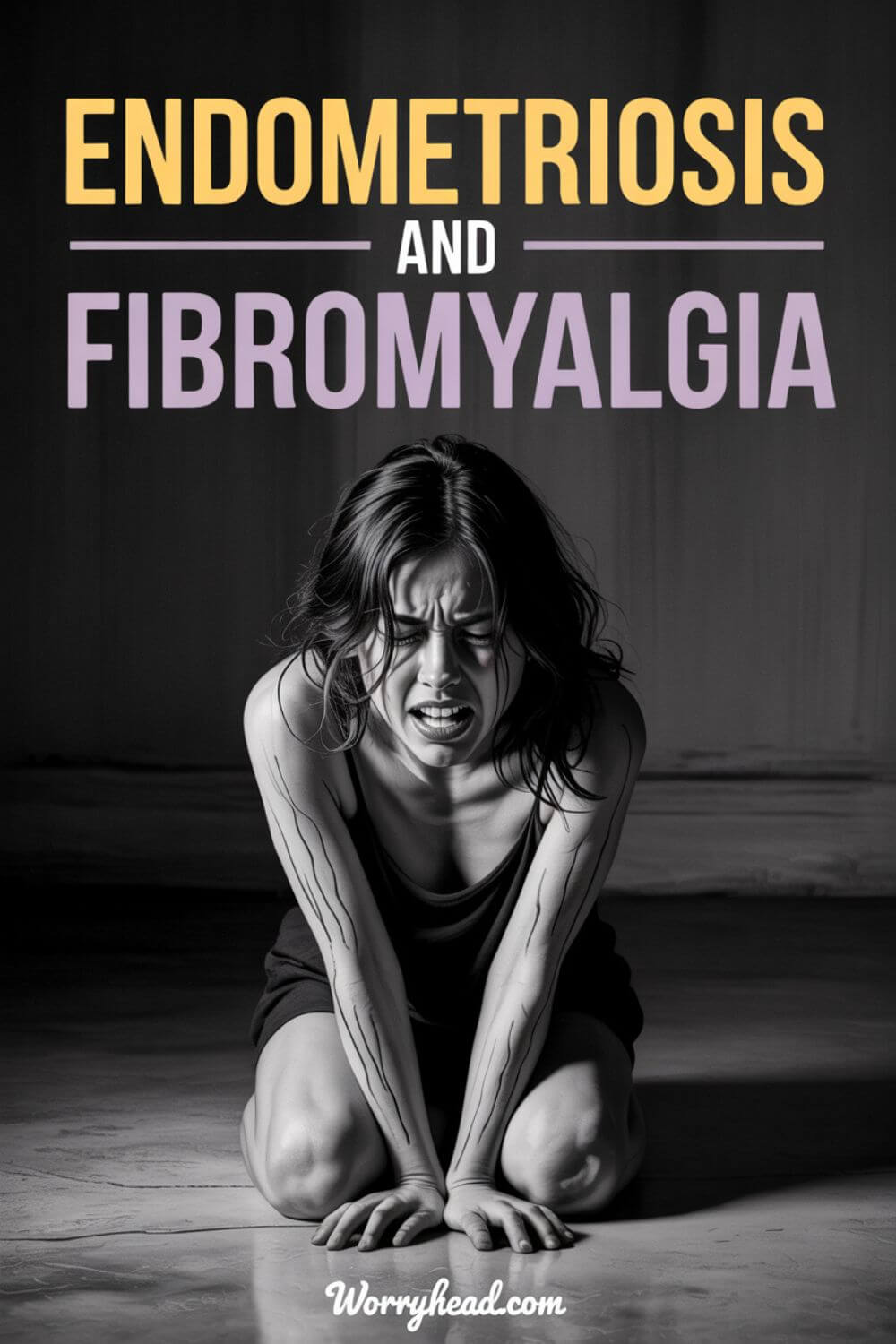Endometriosis and Fibromyalgia
How do you support the woman you love when she lives with pain you can’t see, and can’t cure? Endometriosis and fibromyalgia are not just medical terms – they are battles she fights daily, often silently, while the world keeps moving as if nothing is wrong.
You support her by first believing her pain is real, even when no scan or blood test can prove it. You choose to stand beside her, not just when it’s easy, but especially when it’s hard. You make her feel safe in a world that often doesn’t understand.
I have watched my wife face both of these conditions at the same time, endometriosis tearing at her body with deep pelvic pain, fibromyalgia wrapping her in a blanket of exhaustion and aching muscles that no rest can fix.
Some days she can smile, others she can barely move. The cruel part is that most people don’t see it. And for us, as partners, that invisibility can be one of the hardest things to accept, because it means the weight of belief often rests on our shoulders alone.
If you’re ready to understand what she’s going through, not from a doctor’s perspective but from a man who’s been there beside her, keep reading, because this guide is for you.
- Endometriosis and Fibromyalgia for Men
- What Is Endometriosis and Fibromyalgia?
- Endometriosis and Fibromyalgia Diagnosis
- Are Endometriosis and Fibromyalgia Related?
- Are Endometriosis and Fibromyalgia Linked?
- Endometriosis and Fibromyalgia Symptoms
- Endometriosis and Fibromyalgia Treatment
- Difference Between Endometriosis and Fibromyalgia
- Connection Between Endometriosis and Fibromyalgia
- Endometriosis, Fibromyalgia, and Ehlers-Danlos Syndrome
- Endometriosis, Adenomyosis, and Fibromyalgia
- Endometriosis and Fibromyalgia Link
- The Mental Health Impact of Chronic Illness on Women
- Chronic Illness Affects Partners Emotionally
- Building Mutual Emotional Resilience as a Couple
- Living Day-to-Day with Endometriosis and Fibromyalgia
- How to Support Her Without Burning Out?
- What Research Is Saying About Endometriosis and Fibromyalgia?
- Conclusion on Endometriosis and Fibromyalgia
- Frequently Asked Questions About Endometriosis and Fibromyalgia
Endometriosis and Fibromyalgia for Men
Before we dive deeper, it’s important to look at the bigger picture of what endometriosis and fibromyalgia really mean for both the woman living with them and the partner who stands beside her. Each of the sections below is designed to give you a clear understanding, not from a cold medical textbook, but from lived experience.
We’ll start with the basics of what each condition is and how they present themselves, then explore whether there’s a link between them and what research currently says. From there, we’ll move into the signs you should never ignore, the treatment approaches that can help, and why it’s so important to understand the differences between the two.
We’ll also talk about how these illnesses interact, not just physically, but in the way they impact relationships, and what can happen when other conditions like Ehlers-Danlos Syndrome or adenomyosis are added into the mix. You are going to see how understanding the link between these conditions can make you a better, more prepared partner.
Finally, we’ll address the emotional side, the mental health challenges for women living with chronic illness, how it affects partners, and how to build resilience together so you can face this as a united team.
By the time you’ve read through each section, my hope is that you’ll have not only the knowledge but also the confidence to support her with more empathy, patience, and understanding than ever before.

What Is Endometriosis and Fibromyalgia?
When I first heard the word endometriosis, I didn’t understand it. It sounded like one of those medical terms you’d read about in passing, never expecting it to become part of your daily vocabulary. But when the woman you love is diagnosed with it, you learn fast, not just the definition, but the weight of what it means.
Endometriosis is when tissue similar to the lining of the uterus grows outside of it, causing inflammation, scarring, and severe pain.
My wife lives with that pain every month, and often in between. It’s not “just bad periods.” It’s pelvic pain that can drop her to her knees, stabbing sensations that make her curl up in bed, and a constant worry about when the next flare will come.
Fibromyalgia came later. Another invisible illness, but this one felt different. It’s a condition that brings widespread muscle pain, bone-deep fatigue, and a fog that can cloud even the sharpest mind. While endo might target specific areas, fibro spreads itself everywhere, from her neck and shoulders down to her toes.
Watching her live with both is like watching someone run a marathon every day without training, no break, no finish line. The body never fully recovers before it’s hit again. And as her partner, I’ve had to learn what the symptoms really look like in daily life, so I don’t miss the signs that she’s hurting.
Sometimes those signs are obvious – she’s in bed, curled up, barely speaking. Other times, they’re quiet, her smile is a little more forced, her movements slower, her eyes carrying a tiredness that coffee can’t fix.
The impact isn’t just physical. It affects her ability to work, to travel, even to do the things she loves. That’s why my role isn’t just to “be there.” It’s to actively learn, to pay attention, and to adapt our lives in ways that give her space to heal.
This is what I’ve come to understand about these conditions:
- Endometriosis is a chronic inflammatory condition where endometrial-like tissue grows outside the uterus.
- Fibromyalgia is a disorder causing widespread pain, fatigue, and cognitive difficulties.
- Both conditions are invisible to the eye, often misunderstood or dismissed by others.
- Symptoms can overlap, making diagnosis and daily management complex.
- Flare-ups can be triggered by stress, hormonal changes, overexertion, or no clear reason at all.
- Both illnesses can severely affect mental health, increasing anxiety, depression, and emotional exhaustion.
- They can limit physical activities, making even small tasks feel overwhelming.
- Treatment often focuses on symptom management rather than cure.
- Pain is not always visible, but it’s always real.
- Emotional support from a partner can significantly improve her quality of life.

Endometriosis and Fibromyalgia Diagnosis
Getting a diagnosis for endometriosis and fibromyalgia can feel like a marathon you never signed up for. It’s a process full of delays, doubts, and frustration, not just for her, but for you as her partner watching from the sidelines, desperate for answers. I’ve lived through that journey with my wife, and I can tell you that the road to diagnosis is rarely straightforward.
Endometriosis is often misdiagnosed or dismissed for years.
Many women are told their pain is “normal” period pain or brushed off with painkillers and reassurances. The gold standard for diagnosis is laparoscopy, a surgical procedure that allows doctors to see and remove the abnormal tissue, but getting to that point often takes years of pushing, persistence, and self-advocacy. In the meantime, she may endure ultrasounds, blood tests, and countless GP visits without clear answers.
Fibromyalgia, on the other hand, has no definitive test. It’s diagnosed based on symptoms, patient history, and ruling out other conditions. This makes it even more frustrating because there’s no single scan or lab result that will “prove” it’s there.
Doctors will often use tender point exams, discuss the severity and duration of pain, and assess fatigue, sleep quality, and cognitive symptoms before confirming the diagnosis.
As a partner, your role during this phase is critical. She needs someone who will believe her symptoms even when medical professionals are skeptical. I learned quickly that my job was to help her document patterns, keeping track of pain levels, flare triggers, and other changes in her health. That record can be the difference between a vague description and a powerful case for further testing.
The diagnosis process can also take an emotional toll. She might feel invalidated when doctors don’t take her seriously, and it’s easy for her to doubt herself. This is where your presence matters most, to remind her that her pain is real, her voice deserves to be heard, and you’re not going anywhere, no matter how long it takes to get answers. Take a look:
- Endometriosis diagnosis often requires laparoscopy, but delays are common.
- Fibromyalgia has no single test, it’s diagnosed by symptoms and exclusion.
- Both conditions are frequently misunderstood or dismissed early on.
- Keeping detailed symptom records can speed up the process.
- Emotional support during diagnosis builds trust and resilience.
- Advocacy from a partner can push for faster and more thorough investigations.
- Misdiagnosis can lead to years of unnecessary suffering.
- Believing her from the start is one of the most important roles you can play.
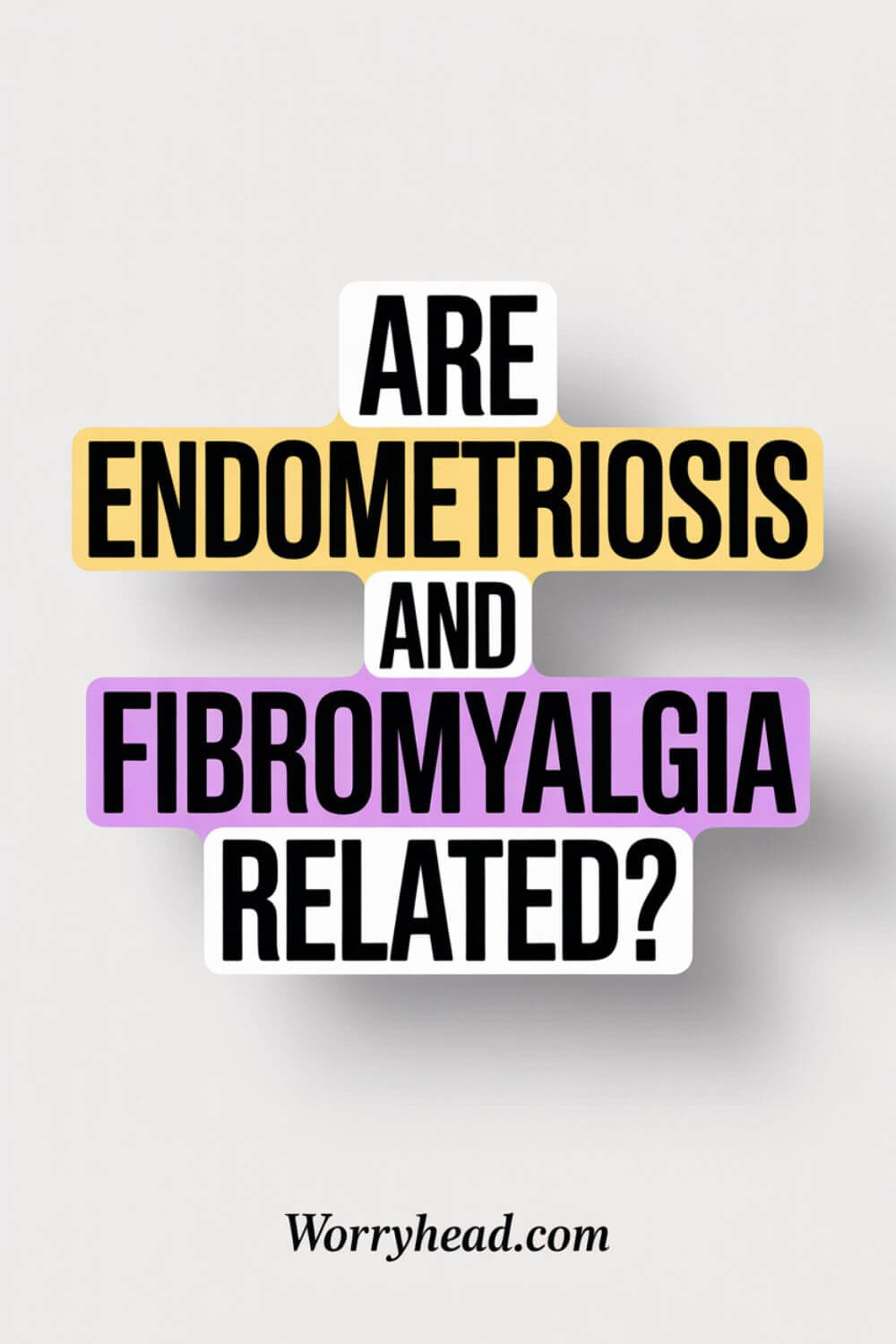
Are Endometriosis and Fibromyalgia Related?
When my wife was first diagnosed with fibromyalgia, one year after endometriosis, I remember asking the same question you might be asking right now: Are these two connected, or is it just a cruel coincidence?
It’s a question that doesn’t just live in medical journals, and it lives in the minds of couples like us, searching for answers.
Research has found that women with endometriosis are statistically more likely to also be diagnosed with fibromyalgia. But science is still piecing together why. Some theories suggest that the chronic pain of endometriosis might lead to central sensitization, a state where the nervous system becomes hypersensitive to pain signals, which is a hallmark of fibromyalgia.
From where I stand as a partner, the connection feels obvious. I’ve seen how long-term pain changes the way her body reacts. It’s like her nervous system is always on high alert, as if it’s forgotten how to switch off. Even on “good days,” she can be hit with pain that doesn’t seem to have a clear trigger.
I’ve also learned something important – the link isn’t always the same for everyone. Some women have endometriosis without fibromyalgia, and others have fibromyalgia without endometriosis. That’s why it’s dangerous to assume. The only way to know is through proper medical assessment, patience, and listening to her when she says something feels wrong.
Doctors still debate the depth of this relationship. Some focus on hormonal influences, others on immune system dysfunction. But for us as partners, the medical debate is only part of the story. We’re here to help her navigate life when two conditions collide, regardless of whether science has fully defined their connection.
I remember nights when she’d be in bed from endometriosis cramps, only to wake up the next day with aching muscles all over; that’s not just a coincidence but her reality. And knowing there may be a connection helps me prepare for the kind of support she’ll need.
So, what can I say – are endometriosis and fibromyalgia related? Let’s sum it up:
- Research shows higher rates of fibromyalgia in women with endometriosis compared to the general population.
- Theories suggest shared mechanisms like chronic inflammation or central sensitization.
- Both conditions can involve overactive pain pathways in the nervous system.
- Immune system dysregulation may play a role in both illnesses.
- Hormonal fluctuations may contribute to symptom overlap.
- Mental health strain from chronic pain can worsen both conditions.
- Lifestyle changes and stress management benefit both.
- Symptom tracking can help identify patterns between the two.
- Not every woman with one condition will have the other.
- For partners, the focus should be on care, not just cause.

Are Endometriosis and Fibromyalgia Linked?
When you live beside someone who has both endometriosis and fibromyalgia, the question of whether they are linked stops being academic; it becomes personal. You start noticing patterns, overlaps, and moments where one condition seems to feed the other. It’s not just about co-existing illnesses; it feels like they’re part of the same storm.
Medically, “linked” often refers to shared pathways in the body. Some researchers believe both conditions may involve the way the brain and spinal cord process pain, a kind of misfiring in the nervous system where pain signals are amplified. Others point to immune system irregularities, where inflammation plays a role in both.
From my perspective, the link shows itself in the way my wife’s symptoms interact.
A particularly bad endometriosis flare can trigger a spike in her fibromyalgia pain. Likewise, a week of fibro fatigue and muscle aches can make her more vulnerable to endo-related discomfort. It’s like her body is caught in a loop where one condition fuels the other.
This isn’t just physical. The emotional weight doubles when they’re both active.
Pain and fatigue take turns robbing her of energy, sleep, and focus. As her partner, I’ve had to learn that helping her isn’t about separating the conditions; it’s about seeing the whole picture and adjusting our lives around it.
The frustrating truth is that science hasn’t officially proven a definitive link. But in the real world, where couples are living with this daily, the connection feels undeniable. It shapes how we plan our days, our work, even our holidays.
It demands a type of awareness that most relationships never have to develop:
- Both conditions may share neurological pathways involving heightened pain sensitivity.
- Inflammation may contribute to symptom overlap and flare severity.
- Hormonal changes can worsen both conditions simultaneously.
- Poor sleep quality is common in both, fueling fatigue and pain.
- Emotional stress can intensify symptoms of each condition.
- Flares in one often coincide with flares in the other.
- Symptom management strategies often benefit both illnesses.
- Doctors may treat them separately, but the real-life impact is interconnected.
- Recognising the link helps partners anticipate needs better.
- Living with both requires pacing, flexibility, and constant communication.
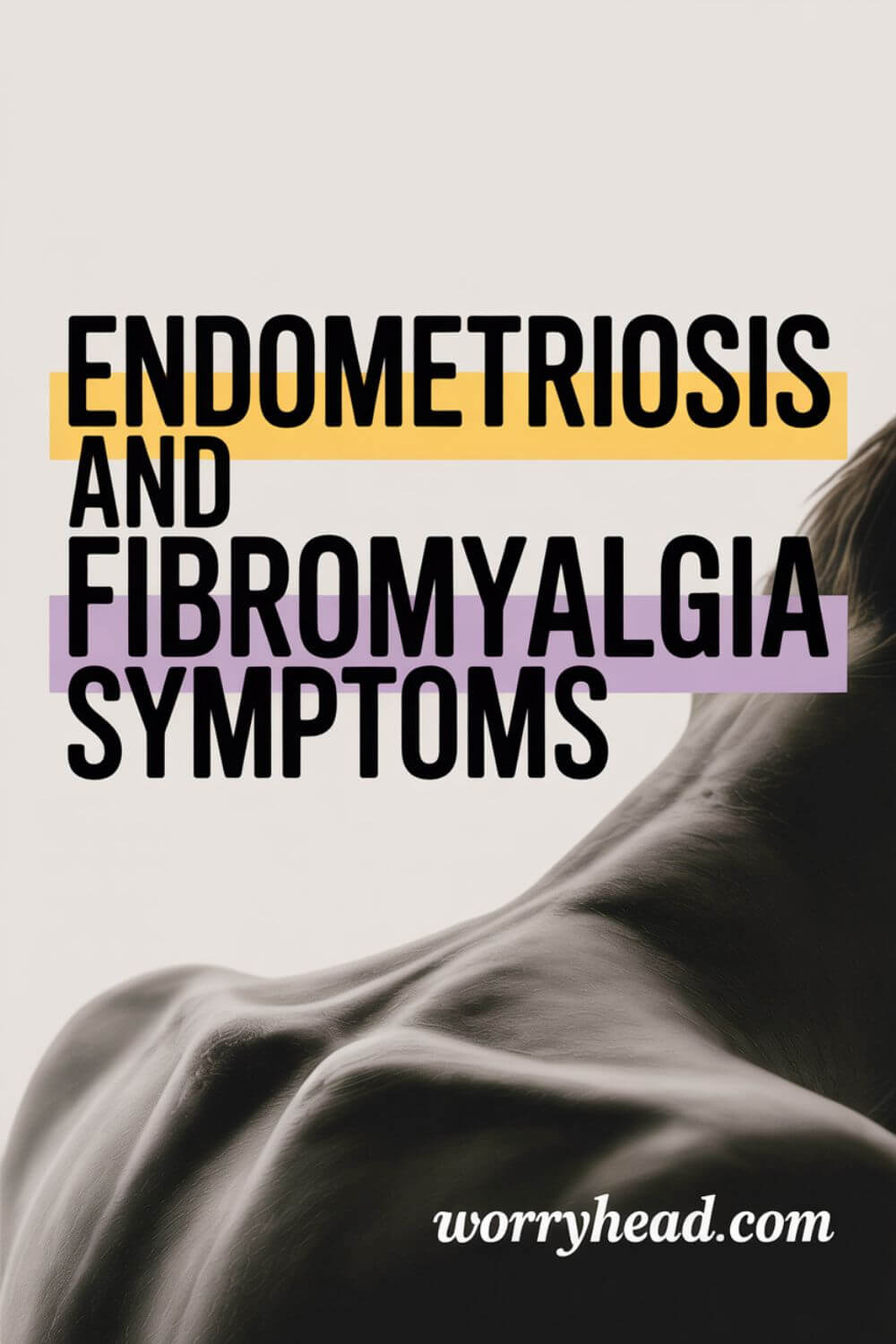
Endometriosis and Fibromyalgia Symptoms
One of the most important lessons I’ve learned as a husband is this. If she says something feels wrong, I believe her immediately. And not because I’m trying to be a “good partner,” but because I’ve seen what happens when symptoms are ignored or brushed aside; they get worse, and so does the emotional toll.
Endometriosis symptoms often begin with pelvic pain, but they don’t end there. My wife has had days where the pain radiated down her legs, into her back, and even made it hard to breathe deeply. Fibromyalgia symptoms can appear in the same week, leaving her with sore muscles, headaches, and a deep fatigue that doesn’t lift even after sleep.
The overlap can be deceptive. I’ve seen her push through pain because she didn’t want to “make a fuss,” only to crash later and need days to recover. That’s why paying attention to the early signs, the subtle changes in her voice, her energy, and the way she moves, is crucial.
Some signs may seem small, but they matter more than you think.
If she’s unusually quiet, avoiding certain movements, or seems more irritable, it could be her body’s way of saying she’s in pain. And when these signals come, the best thing I can do is step in, not to take over, but to make life a little easier in that moment.
Partners often underestimate how exhausting these illnesses are. This is not just about pain, but it is about how pain drains her mental focus, patience, and ability to function in daily life. Ignoring the signs isn’t just risky for her physical health; it can damage the trust between you if she feels unseen.
These are the symptoms I’ve learned to never overlook, even when they’re subtle:
- Persistent pelvic pain, especially if it worsens outside her menstrual cycle or ovulation.
- Sudden increase in muscle tenderness or widespread aches.
- Overwhelming fatigue not relieved by rest.
- Painful intercourse or pelvic discomfort after intimacy, or avoiding intercourse altogether.
- Digestive issues like bloating, constipation, or nausea during flares.
- Brain fog or trouble concentrating that appears suddenly.
- Visible changes in posture or guarded movements.
- Unusual mood shifts that are linked to pain or fatigue spikes.
- Recurring headaches or migraines.
- Disrupted sleep patterns leading to further exhaustion.
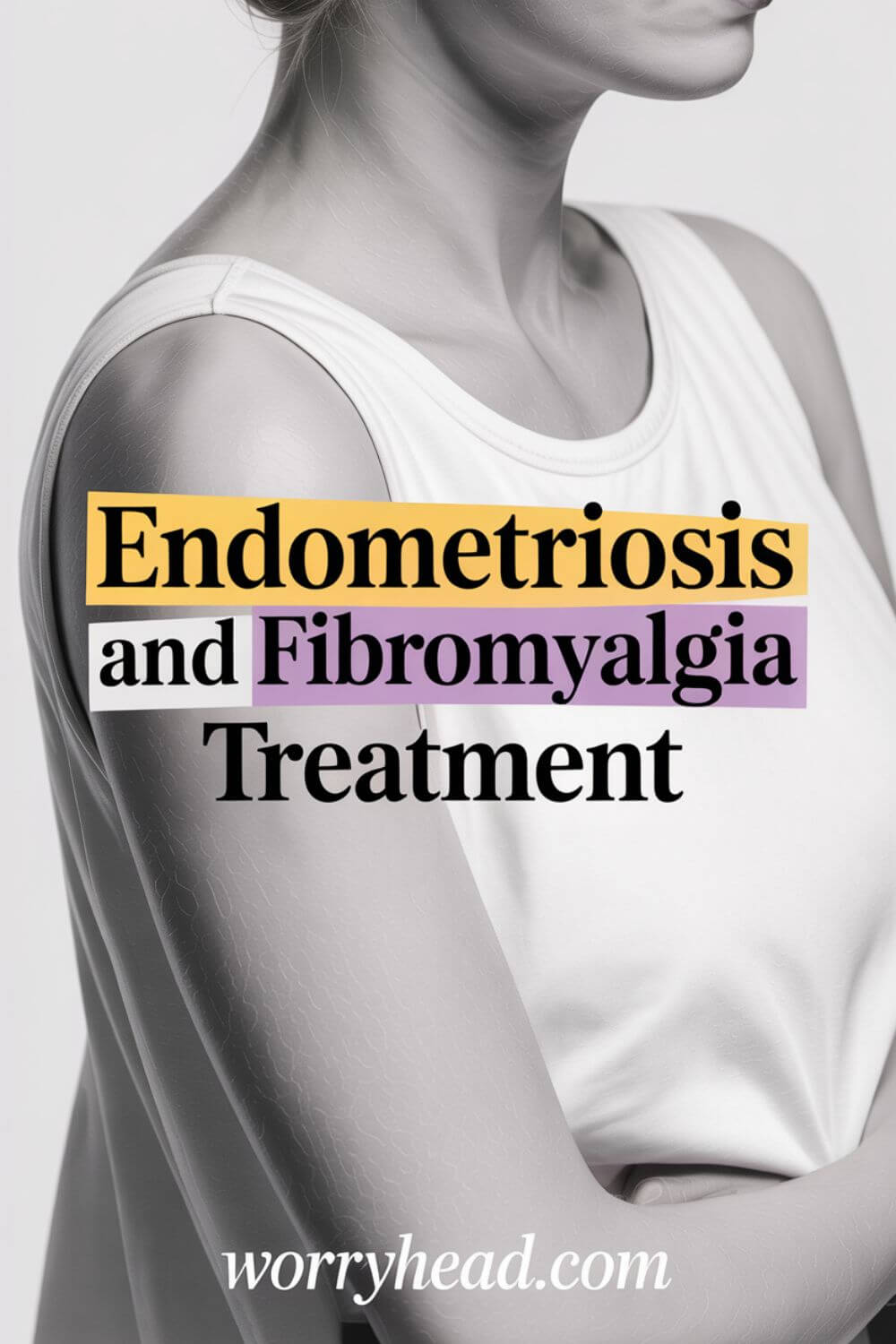
Endometriosis and Fibromyalgia Treatment
When my wife began treatment for endometriosis, I thought the hardest part would be the surgery and recovery. I was wrong. The real challenge was realising there’s no “cure,” only management, and that fibromyalgia made everything more complicated. The treatment journey is rarely linear, and what works one month may not work the next.
Medical treatment for endometriosis often involves surgery to remove lesions, hormone therapy to slow disease progression, and pain management strategies. Fibromyalgia, on the other hand, is typically addressed through a combination of medication, gentle exercise, sleep support, and stress reduction techniques.
The overlap means that she often needs a blend of both approaches, and that’s where my role as a partner becomes essential.
Support isn’t just about holding her hand in the doctor’s office, though that matters. It’s about making our home a place where healing is easier. For us, that’s meant adjusting our routines so she can rest without guilt, helping track her symptoms so we can spot patterns, and being the one to ask questions when she’s too exhausted to remember them.
I even started blogging, creating multiple blogs, to help us financially feel secure, and free of financial worries, and to build her a home office of her dreams, where she could work from home in comfort on the things she loved, and focus on recovery from her flare-ups, rather than cancel days of work.
I’ve learned that the emotional side of treatment is just as important as the physical. There are days when she doubts whether she’ll ever feel better, and my job is to remind her she’s not in this alone. Sometimes that means encouraging her to try new therapies, other times it means respecting her decision to pause and just breathe.
One of the most valuable things I’ve done is create stability. That means keeping the house stocked with the foods that ease her flares, making sure her heating pad is always ready, and helping her balance medical appointments with downtime.
Small, consistent actions can make the biggest difference in the long run. And here’s the truth – as men, we can’t fix her illness! But we can help her carry it. That’s not a weakness; that’s love in action. Allow me to give you a few examples:
- Attend medical appointments and take notes for future reference.
- Help track symptoms, medications, and side effects.
- Create a calm home environment for recovery days.
- Encourage gentle, low-impact activities without pushing too hard.
- Manage household responsibilities during her flare-ups.
- Research new treatment options and discuss them together.
- Be patient when plans change last minute due to her health.
- Respect her physical limits, especially on bad pain days.
- Offer emotional reassurance without dismissing her fears.
- Celebrate small improvements, no matter how minor they seem.
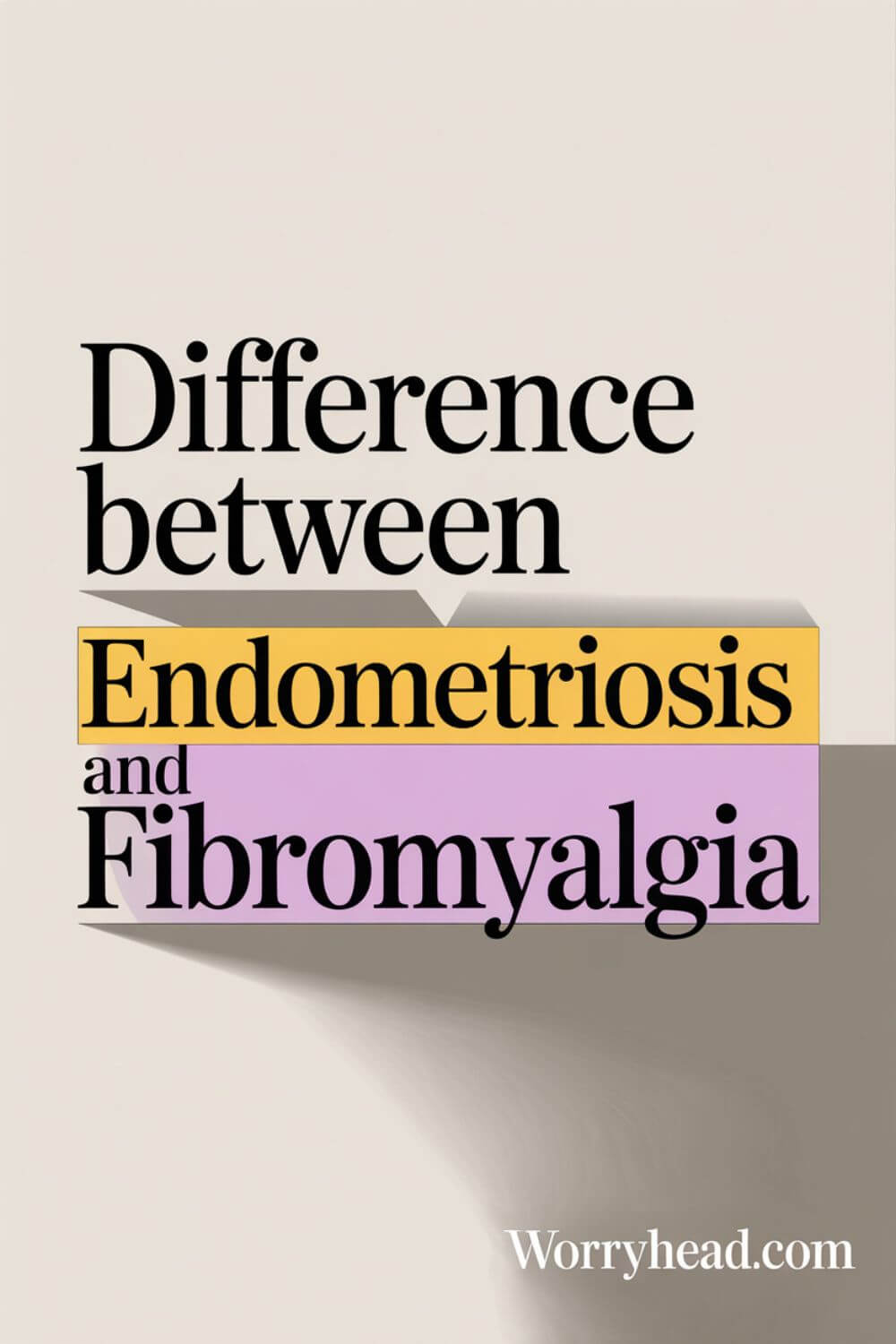
Difference Between Endometriosis and Fibromyalgia
When I first tried to understand my wife’s health, I made the mistake of thinking pain was pain, that if she hurt, it didn’t matter where it came from. I soon learned that knowing the difference between endometriosis and fibromyalgia isn’t just useful; it’s vital.
Each condition demands a different kind of awareness, patience, and action from me as her partner.
Endometriosis is driven by tissue similar to the uterine lining growing outside the uterus, causing inflammation, scarring, and deep pelvic pain. It often flares in rhythm with her menstrual cycle but can also strike unexpectedly.
Fibromyalgia, in contrast, is a disorder of the nervous system, where pain signals are amplified and the body feels as if it’s under constant attack. The aches and exhaustion are widespread and often unrelated to any visible cause.
Why does this distinction matter?
Because if I don’t know which condition is flaring, I might give the wrong kind of support. When it’s endometriosis, warmth, rest, and sometimes silence help her manage intense pelvic pain. When it’s fibromyalgia, gentle movement, pacing, and also avoiding sensory overload can make the difference between her coping and crashing.
There’s also an emotional aspect.
Endometriosis often brings frustration over its impact on fertility and intimate life. Fibromyalgia can strip away her ability to do even the smallest tasks without exhaustion. Both carry a heavy psychological burden, but in different ways, and my support has to meet those unique needs.
Being able to tell them apart has helped me advocate for her with doctors, plan our days realistically, and avoid pushing her toward activities that might make things worse.
It’s not about overcomplicating things, but it’s about being precise in my care, so she feels truly understood. Take a look:
- Endometriosis pain is often cyclical, but can occur at any time.
- Fibromyalgia pain is widespread and persistent without a clear pattern.
- Treatments differ significantly between the two conditions.
- Triggers for endometriosis may include hormonal changes and inflammation.
- Triggers for fibromyalgia often include stress, poor sleep, or overexertion.
- Endometriosis can directly affect reproductive health.
- Fibromyalgia often causes extreme fatigue and brain fog.
- Emotional struggles can be condition-specific, requiring tailored support.
- Knowing which condition is flaring guides better day-to-day care.
- Recognising differences builds trust and shows deeper empathy.
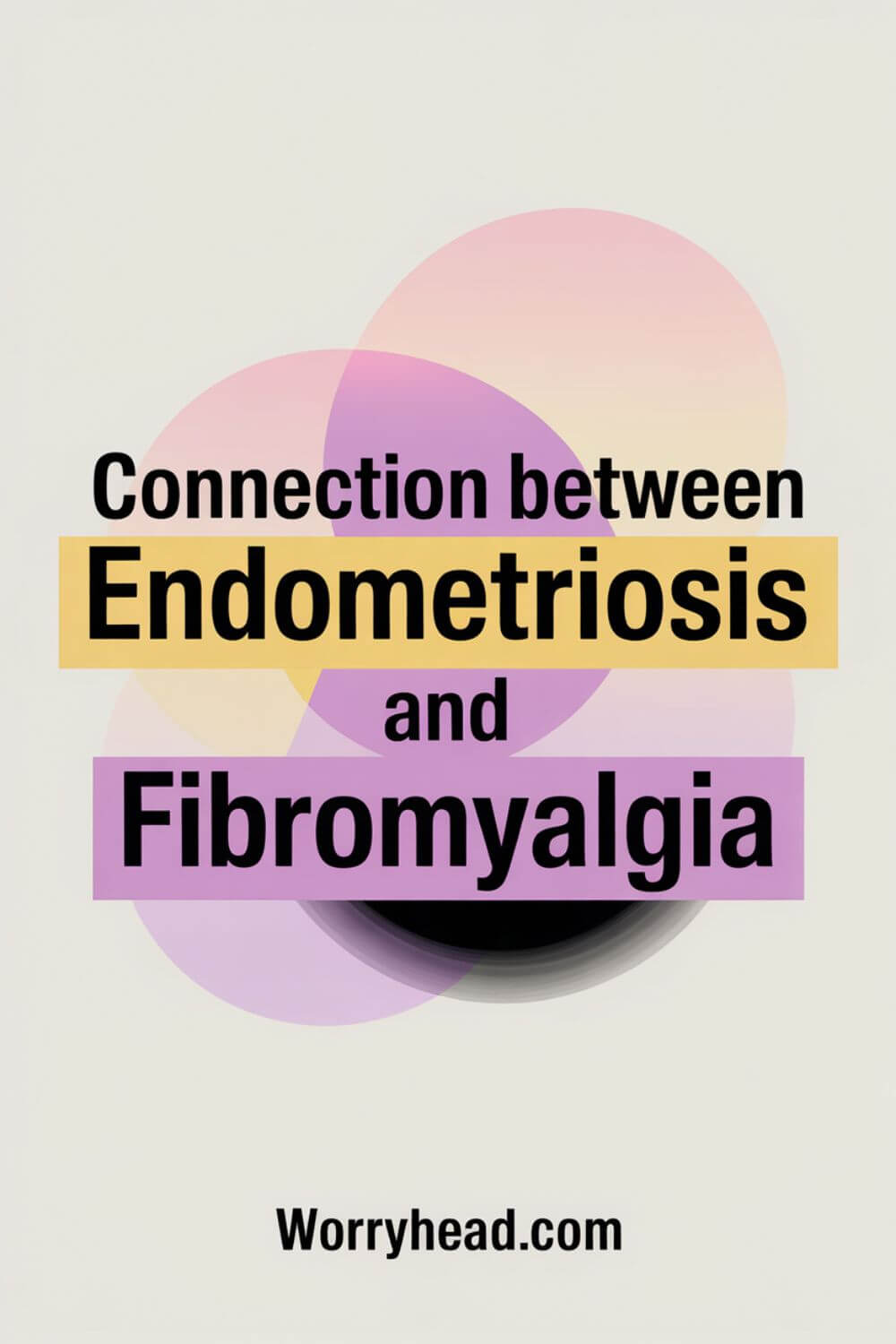
Connection Between Endometriosis and Fibromyalgia
When endometriosis and fibromyalgia show up together in a relationship, it’s not just her body that’s affected, but it’s the bond between you. These conditions don’t knock on the door politely; they move in, rearrange the furniture, and force you both to live differently than you ever imagined.
I’ve seen how each illness feeds into the other, creating a cycle of pain, fatigue, and emotional strain.
Endometriosis brings sharp, stabbing pelvic pain that can make intimacy difficult or impossible. Fibromyalgia adds a constant ache, extreme tiredness, and brain fog that drains her energy for even everyday connections. The combination can turn simple plans, a night out, a weekend away, into logistical puzzles.
For a partner, this reality demands more than just patience. It asks for adaptability and emotional presence.
I’ve learned to redefine romance. Sometimes it’s not candlelit dinners; it’s holding her while she’s curled up with a heating pad. Sometimes it’s not passionate weekends away; it’s making the bed fresh so she can rest in comfort.
But there’s another truth: these conditions can bring you closer if you let them. Facing them together has made me more aware of her needs, more attuned to small changes in her mood or body language. We’ve built a deeper trust because she knows I see her, even on the days when pain steals her words.
Still, it’s not easy. There are moments when frustration builds on both sides. She feels guilty for needing so much help; I feel helpless when I can’t take her pain away. That’s where open communication and mutual grace keep the relationship steady.
The connection between endometriosis and fibromyalgia isn’t just medical – it’s emotional, logistical, and intimate. And the way you respond as a partner can either weaken or strengthen the bond you share. Let’s recap:
- Both conditions demand physical and emotional adjustments in daily life.
- Intimacy can be impacted by pain, fatigue, or hormonal changes.
- Shared experiences of navigating illness can deepen trust.
- Planning becomes essential to avoid overexertion and flare-ups.
- Communication is key to preventing resentment.
- Flexibility helps you adapt to unpredictable changes in symptoms.
- Emotional closeness can grow when partners show consistent support.
- Guilt and helplessness are common but manageable with empathy.
- Practical help can be a powerful act of love.
- Prioritising connection over “fixing” builds relationship resilience.
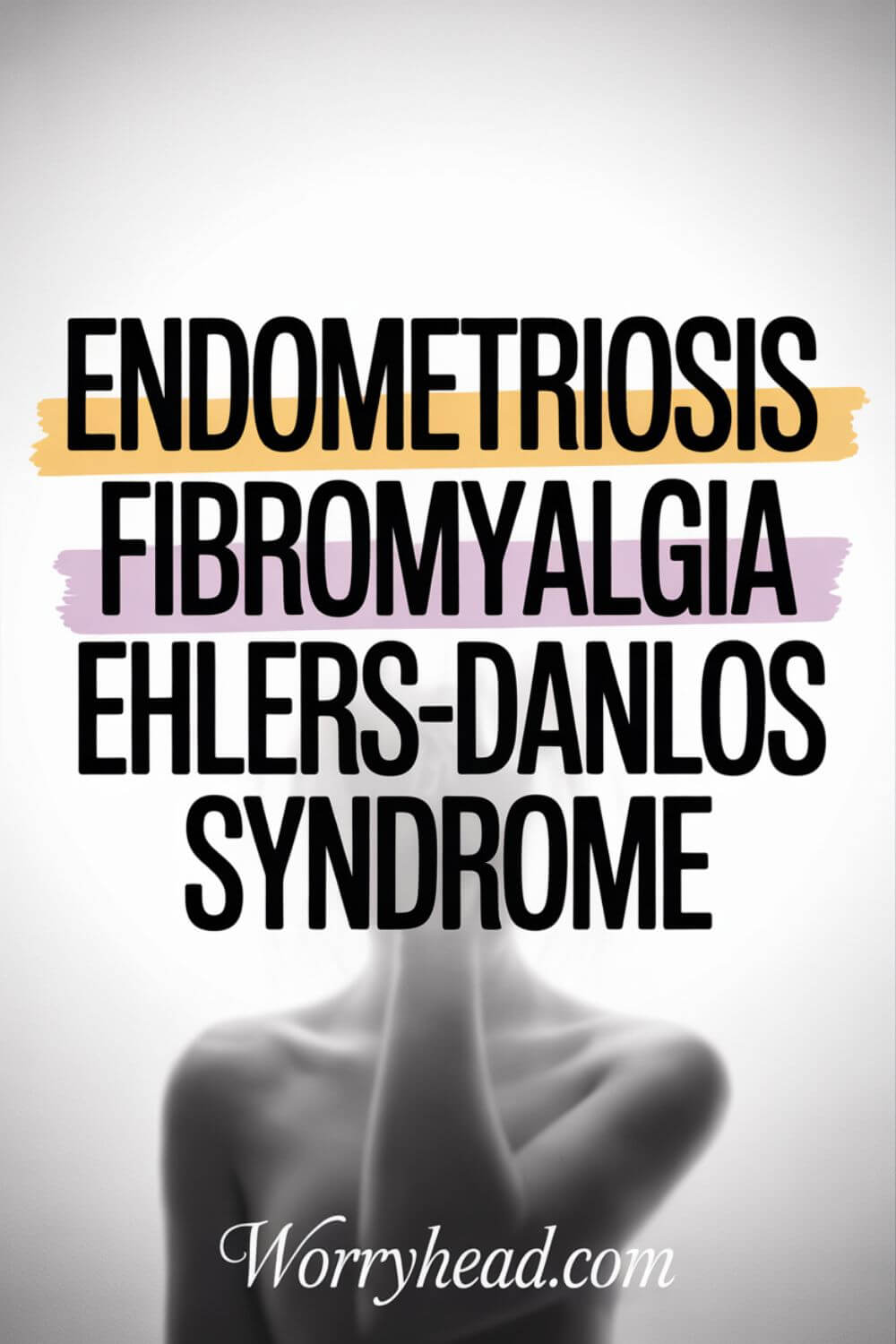
Endometriosis, Fibromyalgia, and Ehlers-Danlos Syndrome
When I first heard of Ehlers-Danlos Syndrome (EDS), I didn’t imagine it could be part of our story. Luckily, it wasn’t I just learnt about it during my research on fibro. But chronic illness has a way of introducing new names into your life, names you wish you never had to learn.
EDS is a connective tissue disorder that can cause joint hypermobility, fragile skin, and chronic pain. For someone already living with endometriosis and fibromyalgia, it adds a third layer of complexity that’s hard to put into words.
The overlap is brutal. Endometriosis causes deep pelvic pain and hormonal flares. Fibromyalgia causes widespread muscle aches and bone-deep fatigue. EDS, meanwhile, can make joints unstable, trigger additional pain, and cause frequent injuries from movements most people wouldn’t think twice about. Together, they create a cycle where the body has no chance to fully recover before something else flares.
EDS changes the way she approaches even the smallest daily activities, such as a simple walk, which can risk a joint slipping out of place. Lifting groceries can cause weeks of pain. For many women, these limitations mean living with constant caution, and for you, it means being ready to adapt plans at a moment’s notice.
As her partner, it’s your job to understand that these illnesses aren’t competing for attention; they’re working together in ways that demand more patience, more gentleness, and more awareness from you. It’s about knowing when to offer your arm for her support, when to suggest rest, and when to quietly take over the chores without making her feel like a burden.
The hardest part is watching her carry the mental weight of three invisible illnesses while the outside world can’t see the battle. But the most rewarding part is knowing that every time you step in, whether it’s holding her steady, helping her avoid injury, or simply listening, you are part of the reason she feels safer in her own body.
A quick reminder about endometriosis, fibromyalgia, and Ehlers-Danlos Syndrome:
- Ehlers-Danlos syndrome affects connective tissue, causing hypermobility and fragile joints.
- Combined with endometriosis and fibromyalgia, it increases pain and fatigue.
- Joint instability can limit mobility and daily activities.
- Minor injuries can lead to long recovery times.
- Flare-ups from one condition can worsen symptoms of the others.
- Requires careful pacing of physical activity.
- The emotional impact is significant due to unpredictability.
- Practical help reduces risk and strain on her body.
- Understanding each illness individually improves overall support.
- Patience and adaptability are essential for both partners.
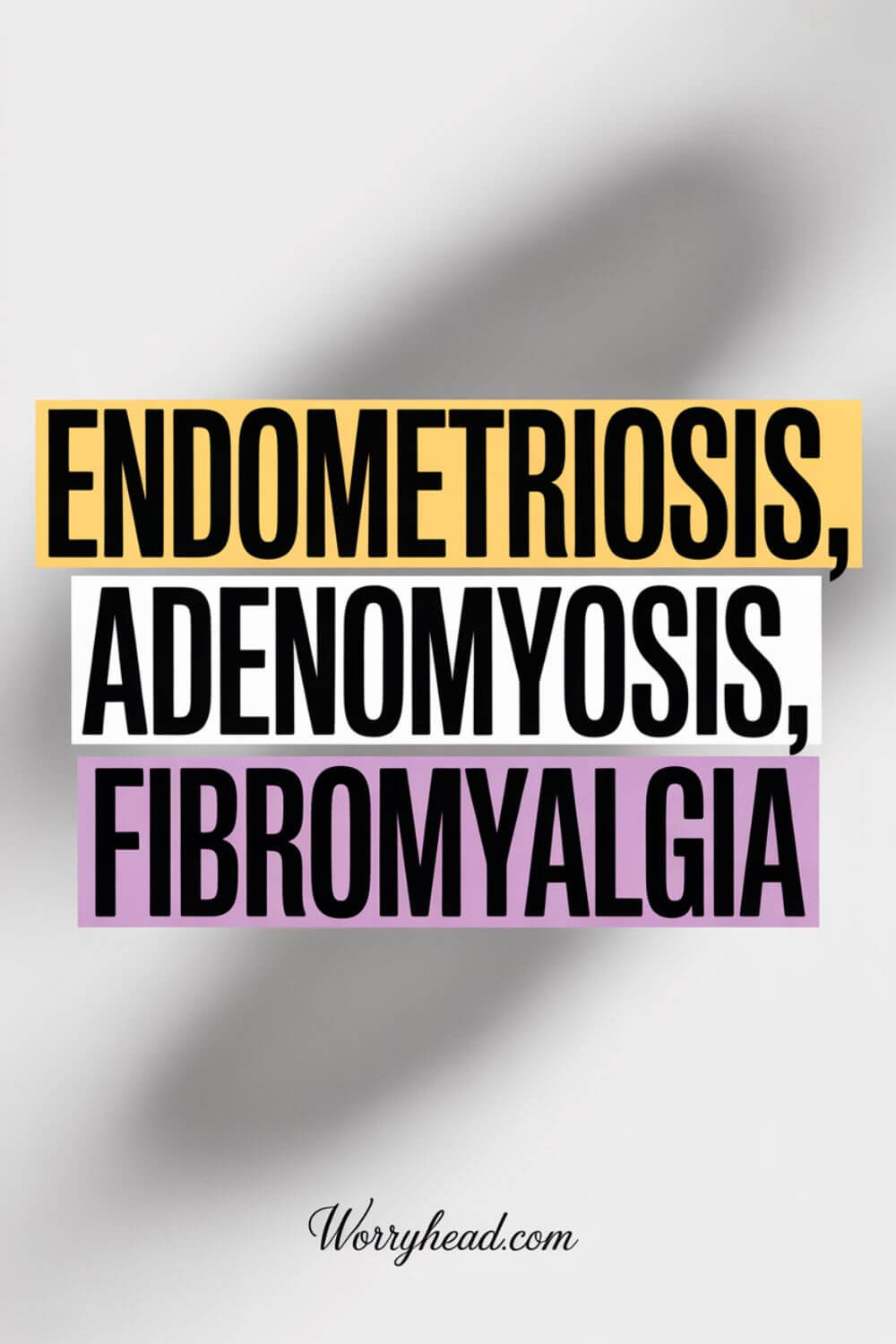
Endometriosis, Adenomyosis, and Fibromyalgia
Luckily, my wife was not diagnosed with adenomyosis on top of endometriosis and fibromyalgia. But for many couples, this isn’t the case. It may feel to you like the rules have changed again
Adenomyosis is a condition where tissue similar to the lining of the uterus grows into the muscular wall of the uterus itself. While endometriosis causes tissue to grow outside the uterus, adenomyosis attacks from within, and the pain it brings can be crushing.
The combination of adenomyosis and endometriosis means she’s dealing with two sources of pelvic pain that can flare together or take turns. Add fibromyalgia into the mix, and her body feels like it’s fighting battles on multiple fronts, with deep pelvic cramps, widespread muscle aches, and relentless fatigue.
Adenomyosis often makes her periods even heavier and more exhausting than before. It can cause prolonged bleeding, clots, and cramps that are sharper, deeper, and more draining than anything she experienced before. These flares don’t just impact her physically; they drain her emotionally, making each month feel like another hurdle to clear.
As her partner, you have to learn that your role here is about anticipating those bad days before they hit. That means helping her plan around her cycle, ensuring the heating pad is ready, and stocking the foods and drinks that ease her discomfort. In a way, stepping in more with housework when she’s too drained to move.
But beyond the practical side, it’s about understanding how this triple combination chips away at her resilience.
The physical exhaustion feeds the fibromyalgia fatigue, while the constant pain lowers her emotional threshold. On those days, she needs more than someone to fetch things – she needs someone who can listen without trying to fix what can’t be fixed.
This mix of endo and fibro alone has taught me that love is often expressed in the smallest moments: drawing the curtains so she can rest in darkness, keeping her company when she’s curled up in bed, or reminding her that even though her body is attacking her, I never will.
I cannot imagine how it must be having adenomyosis on top of the other conditions, but let’s imagine it for a moment:
- Adenomyosis involves endometrial-like tissue growing inside the uterine wall.
- When combined with endometriosis, pelvic pain is intensified and more frequent.
- Heavier, longer periods are common, often with clotting.
- Fibromyalgia fatigue worsens during hormonal flares.
- Emotional health can be impacted by constant, overlapping symptoms.
- Planning around her cycle can reduce stress and flare severity.
- Practical support helps preserve her energy during intense pain.
- Gentle reassurance strengthens emotional connection.
- Open communication avoids misunderstandings during high-pain days.
- Small acts of care can have a huge impact.
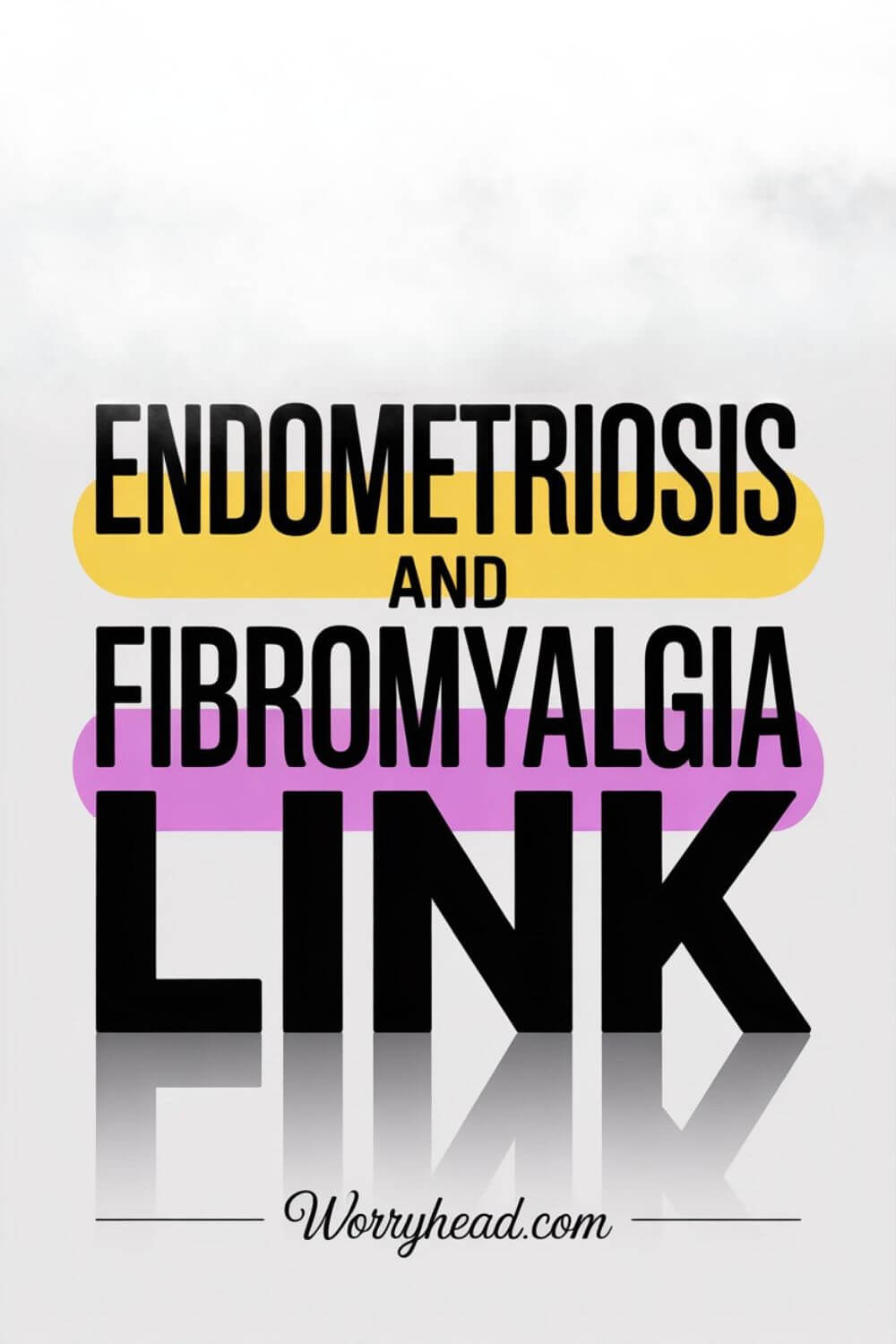
Endometriosis and Fibromyalgia Link
The more I’ve lived alongside my wife’s illnesses, the more I’ve seen how endometriosis and fibromyalgia seem to communicate with each other, almost like they’re part of the same network. I don’t need a medical chart to see the link; I see it in the way her pain behaves, in the way a flare in one condition can trigger or worsen the other.
Medically, the link is still being studied. Some experts believe both conditions involve a heightened pain response in the nervous system, known as central sensitisation. Others point to immune system dysfunction or chronic inflammation as possible shared roots. The truth is, science hasn’t fully mapped out the connection yet, but those of us living it don’t need confirmation to know it’s real.
When my wife has a bad endometriosis flare, the tension and inflammation seem to set off her fibromyalgia. Within hours, the pelvic pain can spread to her shoulders, back, and legs, making movement even harder. On the other hand, when fibromyalgia is in full swing, the fatigue and muscle stiffness seem to lower her body’s resilience, making her more vulnerable to endometriosis pain.
For partners, recognising this link is powerful. It helps you predict bad days before they happen and adjust life accordingly, whether that means keeping plans flexible, stepping in with more practical help, or simply giving her permission to rest without guilt.
I’ve learned that managing the link isn’t about separating the conditions, but it’s about understanding them as part of a larger picture. When you see how they interact, you can step in before the spiral gets worse.
That proactive approach can make the difference between a rough day and a completely unmanageable one. Here’s why:
- Both conditions may share mechanisms like central sensitisation and immune dysfunction.
- Inflammation from one illness can worsen the other.
- Hormonal changes can amplify symptoms of both at once.
- Fatigue is often compounded when flares overlap.
- Early intervention during flares can prevent escalation.
- Tracking symptoms can reveal patterns in how they interact.
- Flexible planning reduces stress during unpredictable health days.
- Emotional support is crucial when both illnesses flare together.
- Addressing both conditions holistically improves quality of life.
- Understanding the link helps partners provide targeted support.

The Mental Health Impact of Chronic Illness on Women
Living with endometriosis and fibromyalgia isn’t just about managing physical pain, but it’s about carrying a constant emotional weight that most people will never see. I’ve watched my wife navigate that weight every single day. And as much as her body is affected, her mind and heart carry their own battles.
Chronic pain chips away at confidence. It changes the way she sees herself, especially when flare-ups keep her from doing the things she once loved. She used to be a dancer, choreographer, performer, and owned a dance school, a business that brought her a smile and money. Endo and fibro stripped her away from it all.
She’s had days when she’s told me she feels “broken” or “useless,” even though I know she is anything but. She asked me to divorce her on multiple occasions, and even tried to commit suicide on two. She thought I deserved a “better, healthier woman who could give me sex, kids, family…” – those words come from a place of exhaustion, from living in a body that doesn’t always cooperate.
The unpredictability of both conditions feeds anxiety. She can wake up feeling okay and, within hours, be hit by a flare that forces her into bed. That kind of uncertainty makes planning difficult and can leave her feeling like a burden when she has to cancel commitments. The guilt she feels in those moments is often heavier than the pain itself.
She also developed OCD, which is supposed to give her a sense of control, but in reality, the Obsessive Compulsive Disorder is one that controls her.
Depression and self-harm creep in, too, not because she’s weak, but because endless cycles of pain, fatigue, and disappointment are draining. I’ve seen how a few bad weeks in a row can make her start questioning whether she’ll ever get a break.
That’s when my role shifts from practical support to emotional anchor, reminding her that she’s more than her illness, that she’s still loved, wanted, and deeply valued.
And then there’s the loneliness…
Chronic illness can be isolating, even in a relationship. Friends might stop inviting her out, family may not fully understand, and she might feel like no one else truly gets it. I’ve learned that simply sitting beside her in that loneliness, without rushing to “fix” it, can be one of the most powerful forms of support I can offer.
Supporting her mental health means recognising that every part of her life is connected. When her emotional resilience grows, she can handle her illnesses better. And that resilience often comes from knowing she’s not alone in the fight.
Here are some things worth remembering about your partner’s well-being:
- Chronic pain can lower self-esteem and self-worth.
- Unpredictability of symptoms fuels anxiety and fear.
- Depression can arise from constant cycles of pain and exhaustion.
- Guilt often comes from cancelling plans or needing help.
- Social isolation can intensify emotional struggles.
- Small emotional check-ins can make her feel seen.
- Consistent reassurance helps rebuild confidence.
- Listening without judgment is vital.
- Mental health support can improve physical coping.
- Love and presence are as important as medical care.
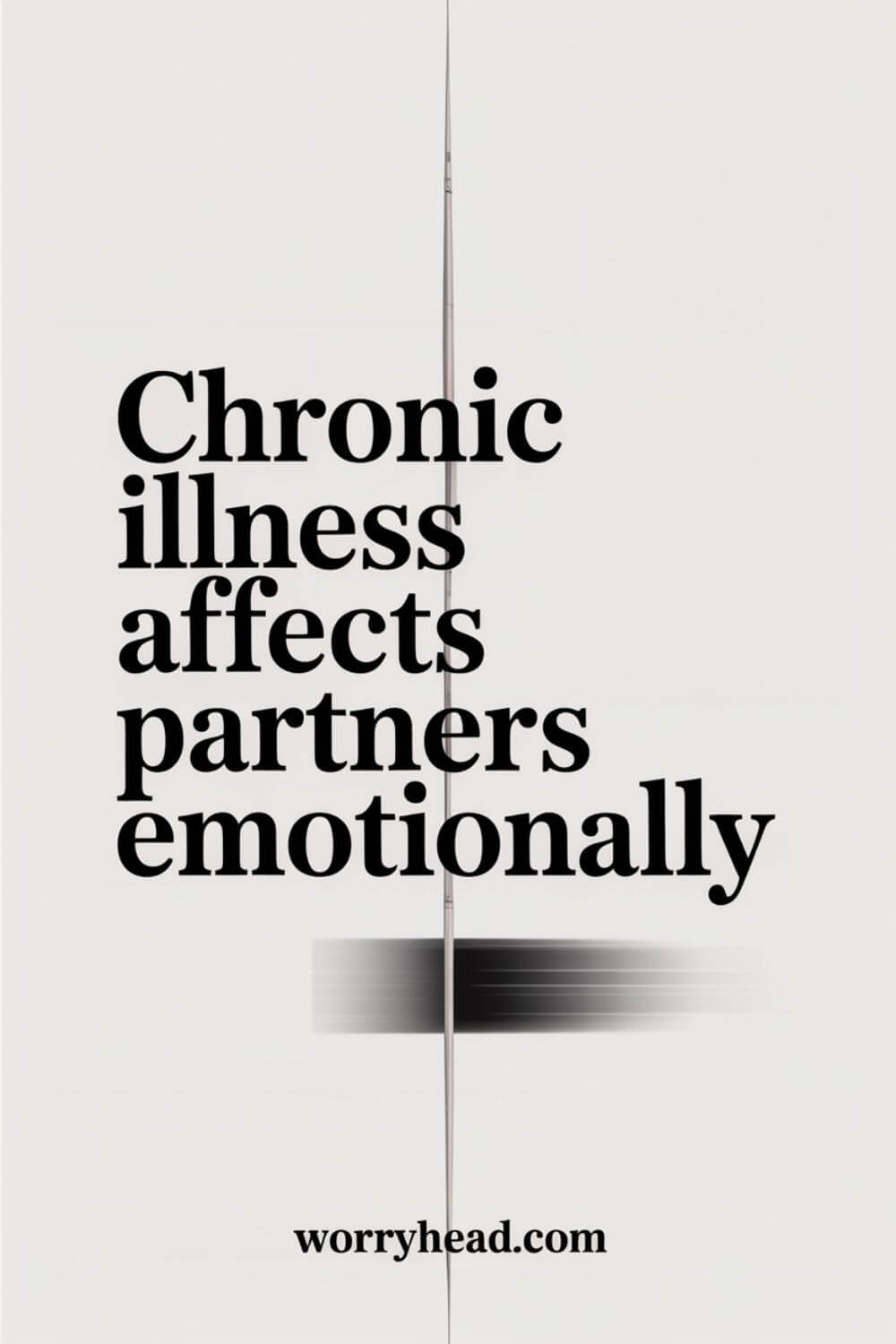
Chronic Illness Affects Partners Emotionally
Standing beside the woman you love while she battles endometriosis and fibromyalgia changes you. It’s not just her fight – it becomes yours, too. You don’t carry the pain in your body, but you carry it in your heart, and that weight can be heavy in ways you never expected.
For me, the hardest part has always been the helplessness.
I can hold her through the worst flares, fetch what she needs, change plans to make life easier, but I cannot take the pain away. That reality hits hard, especially during moments when she’s crying from exhaustion or gripping my hand through the cramps.
There’s also an emotional toll in constantly being on alert…
I’ve learned to read her body language, to notice the way her shoulders tense, the slight strain in her voice, the pause before she stands up. It means I’m always scanning for signs that she’s slipping into a flare. That kind of vigilance can be exhausting, even when you give it willingly.
Partners often deal with quiet grief, not for the person she is, but for the parts of life that illness steals.
There are trips we’ve postponed, events we’ve missed, and moments we’ve had to experience differently because her health set the limits. You learn to adjust, but it’s normal to feel a sense of loss now and then.
And then there’s the pressure to stay strong. People see you as her rock, but they don’t always see the cracks. There are nights when I feel worn down, frustrated at the unfairness of it all, or even lonely because so much of my energy goes into supporting her. That doesn’t mean I love her any less – it means I’m human.
The truth is, supporting someone through chronic illness requires emotional stamina.
It’s about finding ways to process your own feelings so you can keep showing up for her. For me, that means talking honestly with her when I’m struggling, taking moments for my own rest, and remembering that this is a partnership, not just me caring for her, but us facing the world together. So remember:
- Helplessness is a common and difficult feeling for partners.
- Constant vigilance can be mentally exhausting.
- Grief can surface for experiences lost or altered by illness.
- Societal expectations to “be strong” can hide personal struggles.
- Frustration and loneliness are normal but manageable with communication.
- Emotional burnout is possible without self-care.
- Mutual understanding strengthens the relationship.
- Partners need space to recharge emotionally.
- Open conversations help prevent resentment.
- Shared victories make the challenges easier to bear.
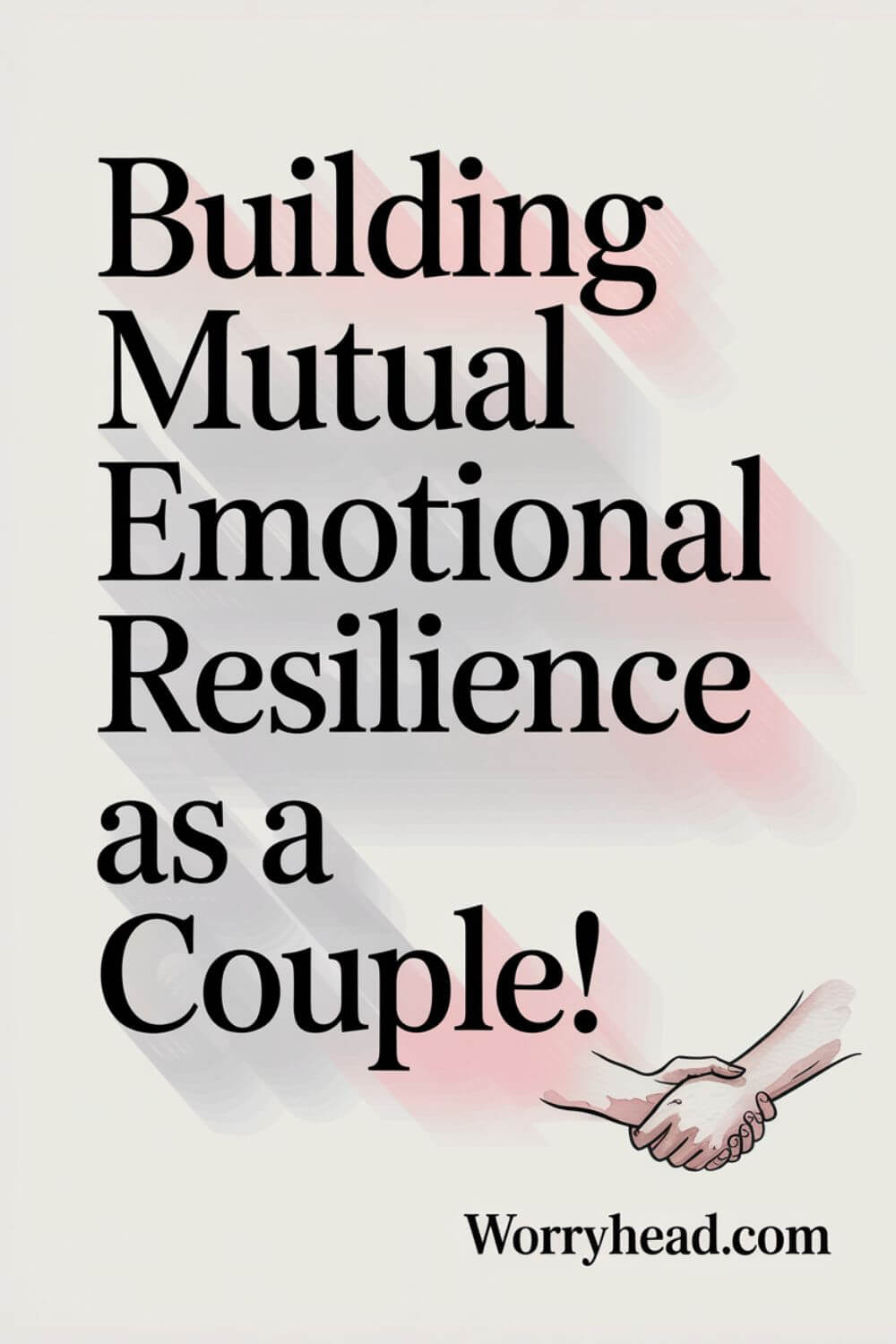
Building Mutual Emotional Resilience as a Couple
When chronic illness moves in, resilience isn’t optional, but it’s a survival skill. Resilience isn’t just about her enduring pain or me enduring the emotional toll. It’s about building a shared strength that belongs to both of us, so we can face endometriosis and fibromyalgia as a team, not as two people fighting separate battles.
Mutual emotional resilience starts with honesty. We’ve learned to talk openly about the hard parts – the fears, the guilt, the frustration – without letting those conversations turn into blame. She tells me when the pain is overwhelming or when she’s feeling low, and I share when I’m struggling with the weight of supporting her. That openness means neither of us suffers in silence.
We’ve also created rituals that ground us. They don’t have to be big or elaborate, sometimes it’s watching our favourite series together, even if she’s curled up under blankets and I’m bringing her tea.
These moments remind us that life isn’t just about illness; there’s still space for joy, laughter, and closeness, even on bad days.
Resilience also comes from protecting our connection.
Chronic illness can easily push intimacy to the background, but we’ve learned to adapt, holding hands more often, speaking words of affection, and finding ways to show love that don’t depend on physical energy. That keeps us bonded when the rest of life feels unpredictable.
Another part is flexibility. We’ve stopped treating plans as rigid commitments. Instead, we see them as hopes we’ll pursue if her health allows. That shift has lifted so much pressure from both of us — she doesn’t feel guilty for cancelling, and I don’t feel disappointed when things change.
Finally, we protect our emotional health the same way we protect our physical health.
That means saying no to people or situations that drain us, surrounding ourselves with those who understand, and reminding each other that our relationship is worth fighting for, not in spite of the challenges, but because of them. Always remember this:
- Mutual honesty prevents resentment and isolation.
- Shared routines create comfort and stability.
- Adapting intimacy maintains emotional closeness.
- Flexible plans reduce stress and guilt.
- Joy and humour are essential parts of resilience.
- Protecting emotional boundaries preserves energy.
- Mutual support strengthens individual well-being.
- Recognising each other’s needs keeps the bond strong.
- Reframing challenges as “ours” promotes unity.
- Resilience is built daily through small acts of care.
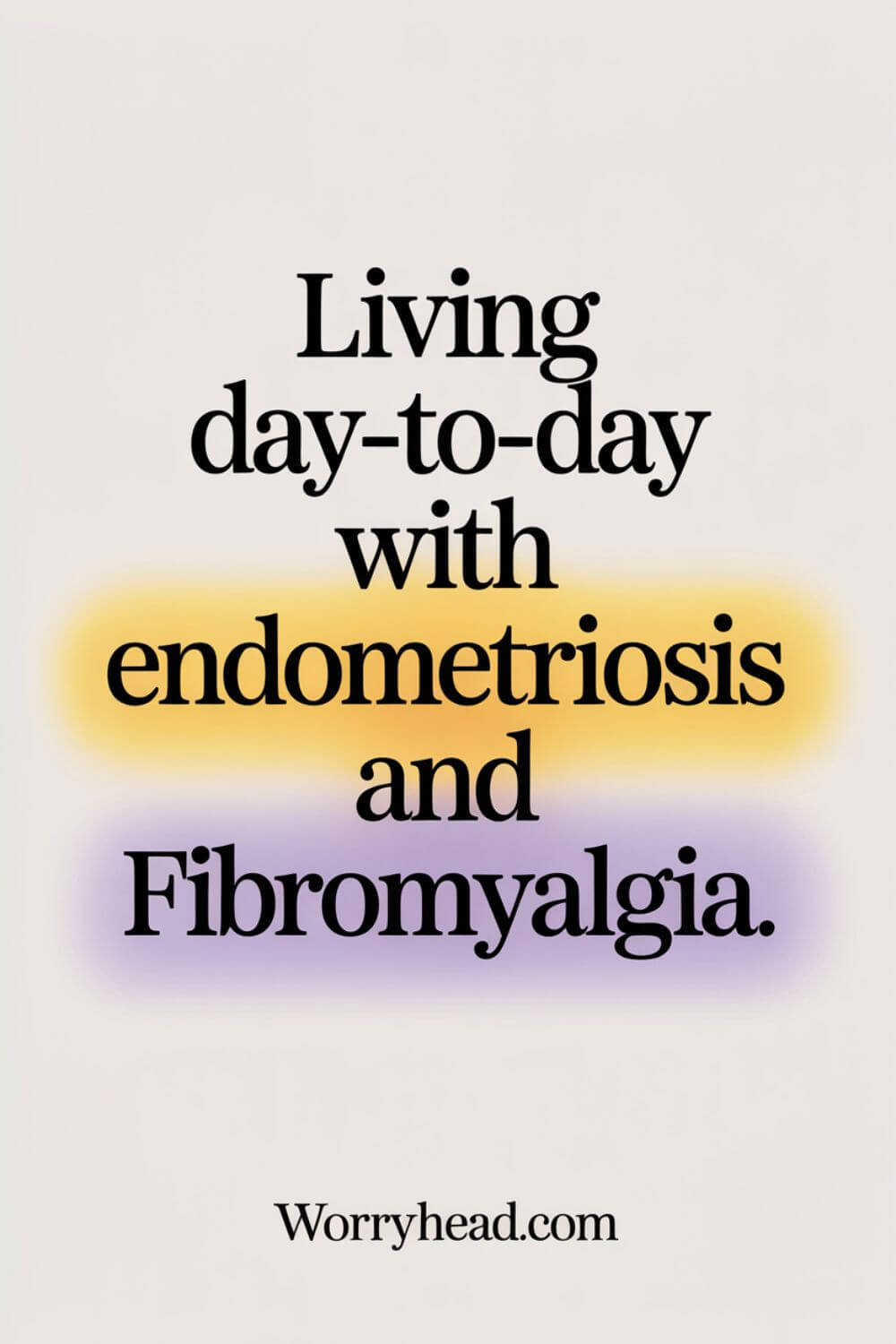
Living Day-to-Day with Endometriosis and Fibromyalgia
One of the biggest lessons I’ve learned as a partner is that life with endometriosis and fibromyalgia isn’t lived in grand moments but it’s lived in the small, daily adjustments that help her make it through each day. The illnesses may flare without warning, but there are things we can do together to make everyday life more manageable and less exhausting.
For us, pacing has become essential. It’s not about doing nothing, it’s about doing just enough, in a way that doesn’t leave her completely drained. That means spreading out tasks, taking regular rest breaks, and being okay with leaving things unfinished if her body says, “Not today.”
Some days she can manage a gentle walk or light housework; other days, simply getting dressed is enough of an achievement.
The home environment matters more than most people realise. We’ve made small but impactful changes, comfortable seating, soft lighting, a heating pad always within reach, and easy access to essentials so she doesn’t have to climb stairs or bend herself unnecessarily during flares. These little adaptations create a sense of safety and reduce physical strain.
Diet and movement also play a part. I’ve learned to stock foods that won’t trigger her symptoms, anti-inflammatory meals, easy snacks for low-energy days, and plenty of hydration options. On good days, we sometimes do gentle stretches or short walks together to keep her muscles moving without overloading her system.
Communication is constant. We check in each morning, not just with “How did you sleep?” but also:
- How’s your pain today?
- What do you think you can manage?
That sets the tone for the day and prevents pushing too hard. It’s a small habit, but it’s saved us from countless flare-ups caused by overdoing it.
Living day-to-day with these illnesses is about teamwork. I’m not just a bystander, I’m part of her routine, her comfort, and her plan for getting through each day with a little more ease. That’s a role I’ll gladly keep playing, no matter how many adjustments it takes. So to summarise:
- Pacing tasks prevents flare-ups from overexertion.
- Comfortable home setups reduce unnecessary strain.
- Heating pads, soft lighting, and easy access to essentials make a difference.
- Anti-inflammatory foods and hydration support her energy and reduce symptoms.
- Gentle activity on good days can help maintain mobility.
- Daily check-ins keep plans realistic and prevent burnout.
- Flexibility allows for changes when symptoms spike.
- Emotional support is as important as physical help.
- Teamwork makes daily life less overwhelming.
- Small, consistent actions build long-term comfort.
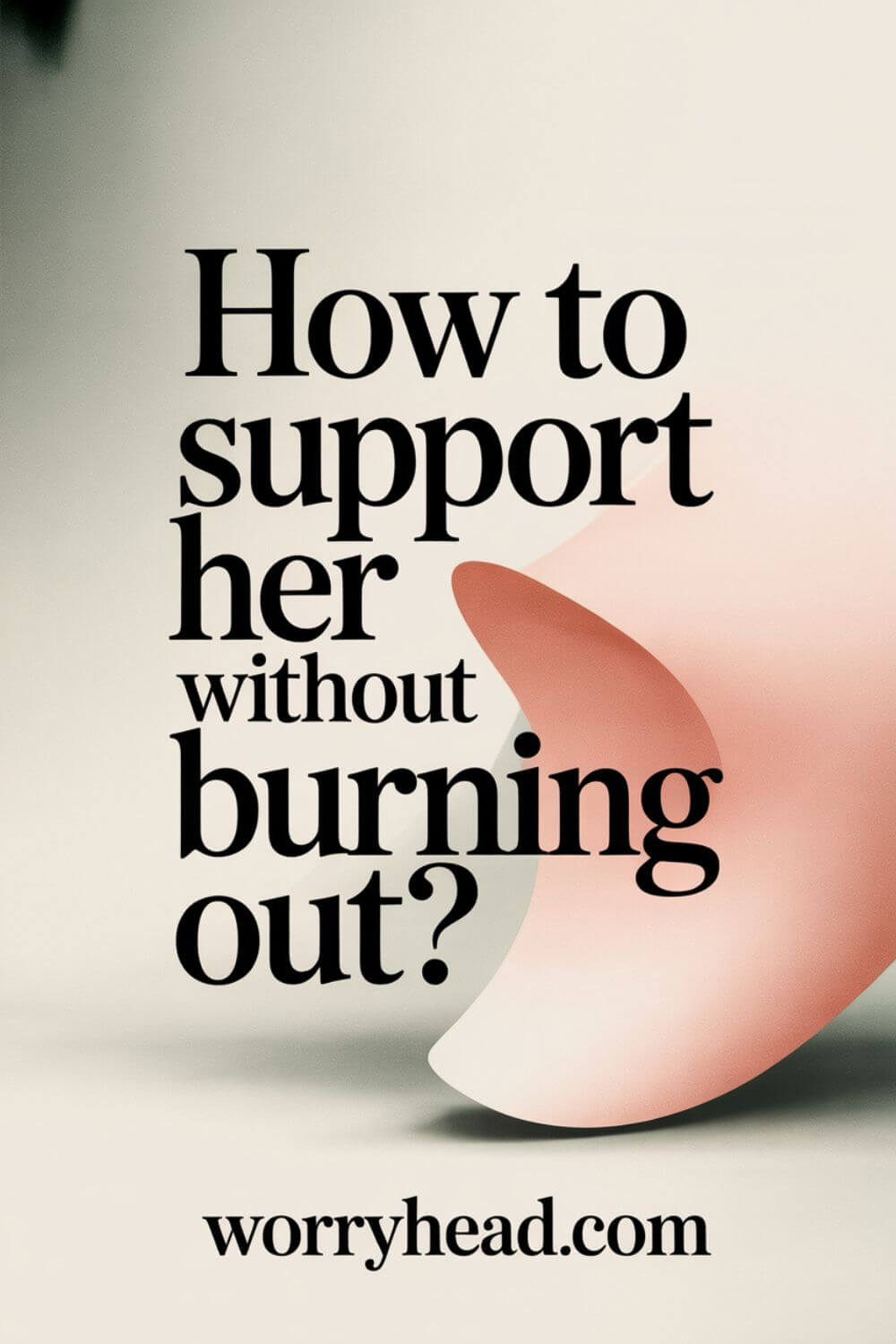
How to Support Her Without Burning Out?
When you love someone with endometriosis and fibromyalgia, it’s natural to pour yourself into caring for her. You want to make life easier, protect her from pain, and be there every time she needs you. But here’s the truth I had to learn the hard way – if you run yourself into the ground, you can’t be the partner she needs.
Support has to be sustainable, or it will slowly erode both your health and your relationship.
Burnout doesn’t happen overnight. It creeps in. You start by taking on a little extra around the house, rearranging your work schedule, or always being on high alert for the signs of a flare. Over time, you may notice you’re more irritable, less patient, or even resentful, not because you don’t love her, but because you haven’t given yourself the space to recharge.
I had to learn that my own well-being wasn’t selfish, it was part of being an effective partner.
That meant setting realistic expectations for what I could do, finding moments to rest even on her bad days, and keeping a life outside of caregiving so I didn’t lose myself in the process.
Sometimes that meant asking for help from friends or family. Sometimes it meant saying, “I need a quick walk to clear my head,” before coming back to give her my full attention. And sometimes it meant accepting that I couldn’t fix everything, no matter how much I wanted to.
The most important shift was realising that support isn’t just about doing but about being. Being present, being consistent, and being emotionally available. You can’t do any of those things if you’re running on empty.
If you want to be there for her for the long haul, you have to pace yourself just as much as she does. Love is powerful, but it needs fuel to keep going. Remember this:
- Burnout in partners can develop slowly and subtly.
- Constant vigilance without rest drains emotional energy.
- yur well-being is essential for sustainable support.
- Taking breaks doesn’t mean you care less.
- Asking for help from others can prevent overwhelm.
- Boundaries protect both partners from emotional strain.
- Self-care allows you to show up with patience and empathy.
- Resentment often stems from exhaustion, not lack of love.
- Accepting you can’t fix everything reduces emotional pressure.
- Support is about presence as much as action.
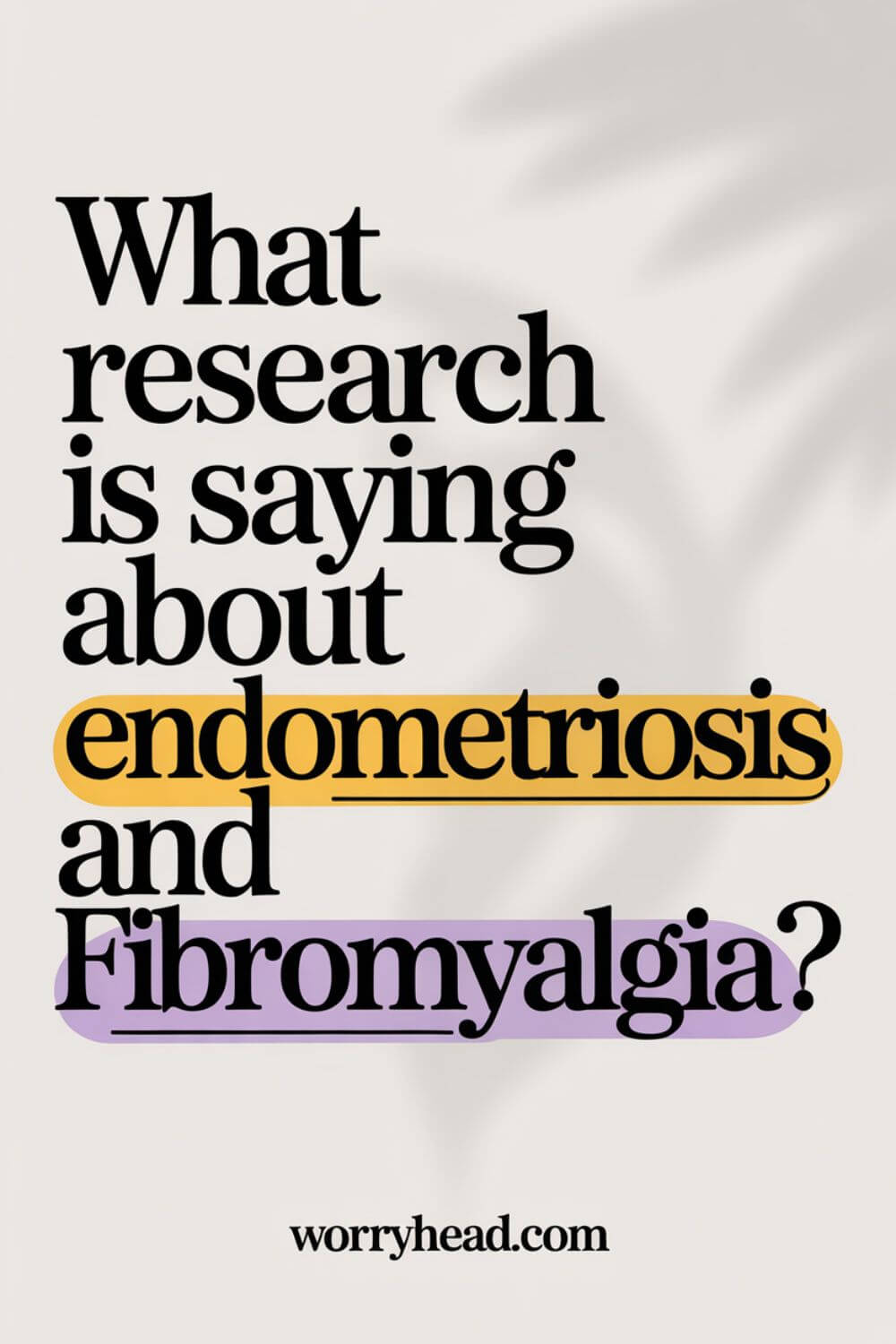
What Research Is Saying About Endometriosis and Fibromyalgia?
The medical community has known about endometriosis and fibromyalgia for decades, but only in recent years has research begun to explore how these two conditions might overlap. For couples living with them, like us, these studies matter, they don’t just explain what’s happening in her body, they help shape better treatments and more compassionate care.
One of the most consistent findings is that women with endometriosis have a higher likelihood of developing fibromyalgia compared to the general population. Studies suggest that chronic pelvic pain may lead to central sensitisation, a process where the nervous system becomes hypersensitive, amplifying pain signals and contributing to widespread discomfort. This is one possible bridge between the two conditions.
Another area of focus is the immune system. Some researchers believe both conditions involve immune dysregulation and chronic inflammation, which may contribute to ongoing pain and fatigue. In fibromyalgia, this could affect neurotransmitters like serotonin and dopamine, influencing mood and pain perception.
Hormonal research is also gaining attention. Because endometriosis is strongly influenced by estrogen, and fibromyalgia symptoms can worsen with hormonal fluctuations, some scientists are investigating whether hormonal treatments might benefit certain patients who live with both. However, results so far are mixed, and more trials are needed.
Interestingly, there’s emerging evidence that gut health could play a role. Studies have linked both endometriosis and fibromyalgia to imbalances in gut microbiota, suggesting that diet and gut-targeted therapies might help manage symptoms for some people.
While the science is promising, there’s still a long way to go. Many studies are small, and the complexity of these conditions makes it hard to draw absolute conclusions. But the direction is clear, more doctors are recognising the overlap, and that means better diagnostic pathways and more personalised treatment options may be on the horizon.
For partners like us, staying informed isn’t just about curiosity, it’s about advocacy. The more we understand the research, the more we can push for care that addresses her whole health, not just one condition at a time. So, here’s what the research says:
- Research shows higher fibromyalgia rates in women with endometriosis.
- Central sensitisation may link chronic pelvic pain to widespread pain.
- Immune system dysfunction and inflammation are common threads.
- Hormonal fluctuations can worsen symptoms of both conditions.
- Hut microbiota imbalances may play a role in symptom severity.
- Emerging treatments explore hormone therapy, pain modulation, and diet.
- Studies remain small, but awareness is growing among clinicians.
- More research is needed to fully understand shared mechanisms.
- Informed partners can better advocate for holistic care.
- Medical understanding is slowly shifting toward integrated treatment.
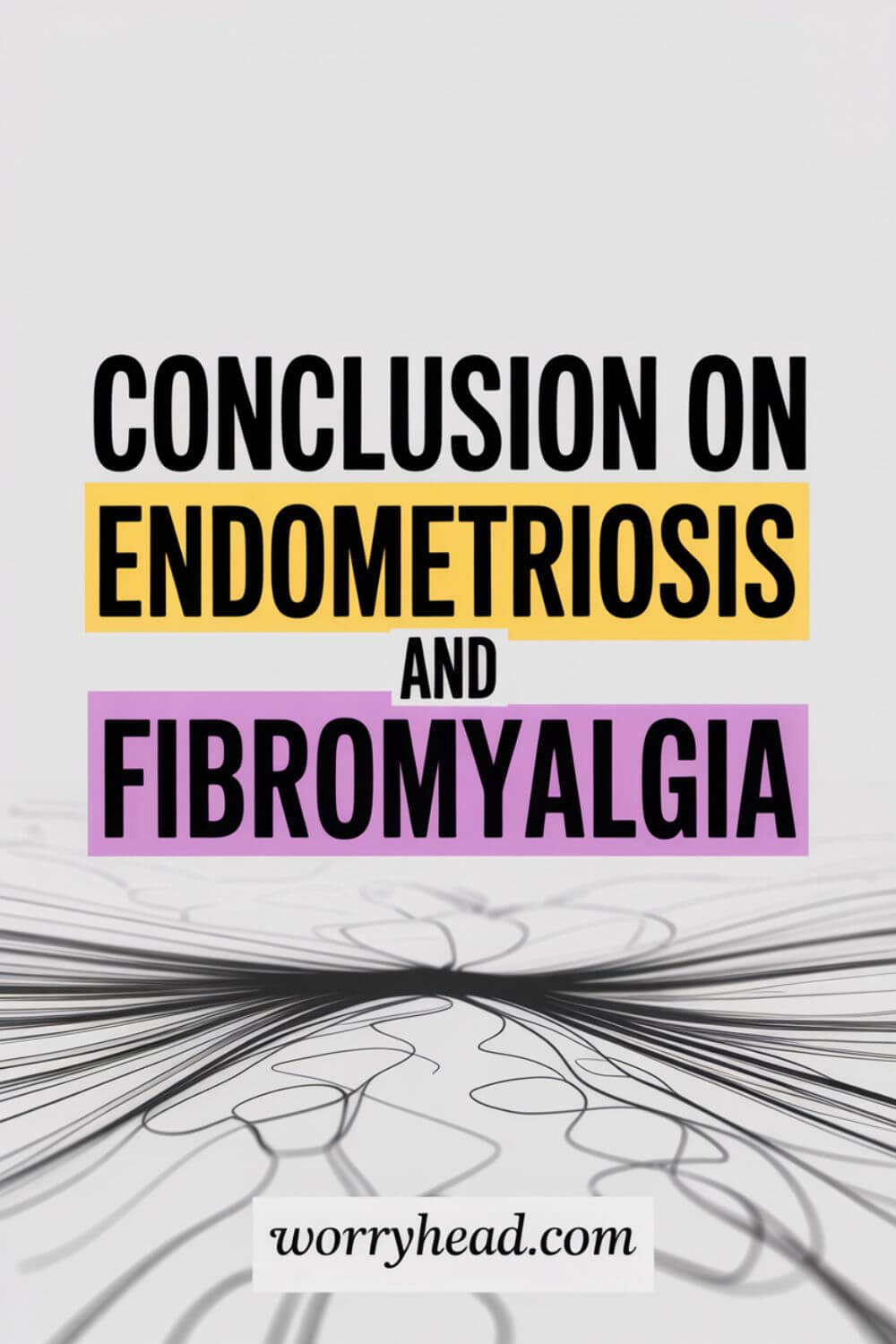
Conclusion on Endometriosis and Fibromyalgia
Living with endometriosis and fibromyalgia is not a battle fought alone; even though much of the pain is invisible, the impact reaches both partners in a relationship. These conditions test patience, strength, and love in ways most couples will never understand. But they also offer an opportunity to build a bond rooted in resilience, compassion, and unwavering support.
I’ve seen my wife face days when her body felt like it was working against her from every angle.
I’ve seen her push through fatigue so heavy it blurred her thoughts, and pain so sharp it took her breath away. And I’ve stood beside her through it all – sometimes as her advocate, sometimes as her caretaker, and always as her partner.
Understanding the difference between these two conditions, their possible connections, and their unique challenges changes everything. It allows you to anticipate her needs, adapt your home and routines, and be present in ways that truly matter. It also reminds you that supporting her is not just about the bad days. It’s about making the good days brighter and more frequent.
As men, we can’t remove the pain, but we can lighten the weight she carries. We can be the steady presence when she feels lost in the chaos of her symptoms. We can be the voice that reminds her she’s still herself, loved, valued, and wanted. even when her body feels unrecognisable.
This journey will never be simple. But the love and understanding you give will ripple through every part of her life. And in return, you’ll find a kind of closeness and trust that illness cannot take away. Remember this:
- Both conditions demand different, but complementary, support strategies.
- Open communication and flexibility are vital.
- Small acts of care have a lasting impact.
- Understanding the link between the conditions improves daily life.
- Emotional resilience benefits both partners.
- Love can grow stronger through shared challenges.
You don’t have to have all the answers – you just have to be there, every day, in whatever way she needs.
Supporting a partner with endometriosis and fibromyalgia means learning, adapting, and loving without conditions. It’s about standing firm in the face of uncertainty and choosing, over and over again, to walk this path together.
If there’s one thing I’ve learned from years of living alongside endometriosis and fibromyalgia, it’s that the illnesses may be hers, but the journey belongs to both of you. These conditions can change plans, test your patience, and push you to emotional limits you never thought you’d reach.
But they can also deepen trust, strengthen your bond, and teach you the kind of love that endures in all seasons.
I’ve watched my wife face pain that most people will never comprehend. I’ve seen her fight to get out of bed when her body begged her to stay still. I’ve held her hand through hospital appointments, stood beside her during long nights of discomfort, and celebrated the small victories others might overlook.
Those moments – both the heavy and the hopeful – are what have built the foundation of our relationship.
Supporting a partner with these illnesses means understanding the unique nature of each one, recognising the possible connections, and knowing how to adjust your role depending on which condition is flaring. It’s about more than just being present during the worst days; it’s about helping her create a life where the good days can thrive.
Men, you won’t have all the answers. You won’t be able to fix it. But your willingness to listen, to adapt, and to stand by her no matter what, that’s the medicine only you can provide. Every act of care, every moment of patience, every time you choose her over the easier path, you’re making her world safer and her heart stronger.
And to the women reading this, your experiences are the centre of this story. You deserve to be believed, to be loved without condition, and to be supported in ways that honour your strength and your vulnerability.
So here’s my message – keep learning, keep listening, and keep showing up. Chronic illness doesn’t have to steal your connection – it can become the reason you grow stronger together.
If you’d like to know more about my journey and why I write about this, you can visit my About page, where I share my story in full. You can also explore other articles in this series to understand more about how to support her, from practical help to emotional resilience.
Love her in ways that make her feel seen, protect her in ways that make her feel safe, and walk beside her in ways that make her feel never alone. That’s what real partnership looks like in the face of endometriosis and fibromyalgia.
If this resonates with you, I’d love to hear your thoughts in the comments. And if you want to take this understanding deeper, you can check out a free chapter of my eBook. It’s my personal guide to supporting the woman you love through chronic illness, written from years of lived experience.


About Me
Hi, I’m Lucjan! The reason why I decided to create this blog was my beautiful wife, who experienced a lot of pain in life, but also the lack of information about endometriosis and fibromyalgia for men…
READ MOREFrequently Asked Questions About Endometriosis and Fibromyalgia
Can you have both endometriosis and fibromyalgia?
Yes. Many women live with both conditions at the same time, though not everyone who has one will develop the other. Research shows that women with endometriosis are more likely to also be diagnosed with fibromyalgia compared to the general population.
Does fibromyalgia make endometriosis worse?
It can. Fibromyalgia causes widespread pain and heightened sensitivity to pain signals, which may make endometriosis-related pain feel more intense or harder to manage. When both flare at once, symptoms can overlap and amplify each other.
Is there a link between endometriosis and fibromyalgia?
While science hasn’t fully proven a direct cause-and-effect link, studies suggest they may share common mechanisms like central sensitisation, immune system dysfunction, and chronic inflammation. Many women notice that flares in one condition can trigger the other.
How are endometriosis and fibromyalgia diagnosed?
Endometriosis is typically diagnosed through laparoscopy, a surgical procedure that allows doctors to see and remove abnormal tissue. Fibromyalgia has no single definitive test — it’s diagnosed through symptom history, examination, and ruling out other conditions.
What is the difference between endometriosis and fibromyalgia?
Endometriosis is a condition where tissue similar to the lining of the uterus grows outside it, causing pelvic pain, inflammation, and sometimes infertility. Fibromyalgia is a nervous system disorder that causes widespread pain, fatigue, and cognitive difficulties.
Can lifestyle changes help with both conditions?
Yes. Gentle exercise, anti-inflammatory diets, stress management, pacing activities, and good sleep hygiene can help manage symptoms of both illnesses. These changes won’t cure either condition but can improve quality of life.
How can a man support his partner with endometriosis and fibromyalgia?
By believing her symptoms, helping her manage daily tasks, attending medical appointments, learning about her conditions, and adapting life so she feels safe and supported. Emotional presence is as important as physical help.
Are there treatments that work for both conditions?
While there’s no single treatment for both, some approaches — like pain management strategies, gentle movement, and mental health support — can help reduce the impact of each. Treatments should be tailored individually.
